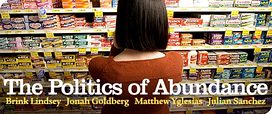Surveying the future of social democracy in America, Matt sees bright prospects for increased government involvement in health care and preschool education. I think this is a plausible forecast. As I’ve argued, there are strong pressures that work to ensure that our relatively competitive and entrepreneurial economy stays that way. Which means that economic growth is likely to keep rolling along, which in turn means that the pot of money available for redistribution will just keep getting bigger. This is the dynamic that Tyler Cowen had in mind when he wrote that libertarian successes bring bigger government.
Still, however, there are limits. At some point, economic and political constraints on the level of taxation start to kick in. And those limits are likely to be tested in the coming years even without an expansion in the health care state’s commitments. Does Matt think that federal tax receipts as a percentage of GDP can be jacked up dramatically over the next couple of decades? It’s possible, to be sure, but not without a huge fight. And if it turns out that America’s historic aversion to European levels of taxation ultimately prevails, Matt’s vision of social democracy is going to get caught in the squeeze.
Social democracy can beat the tax squeeze if the runaway escalation of government health care costs can somehow be reined in. Good luck with that! Can Matt find anything in the history of Medicare or Medicaid that inspires confidence in the U.S. government’s ability to control health care costs?

